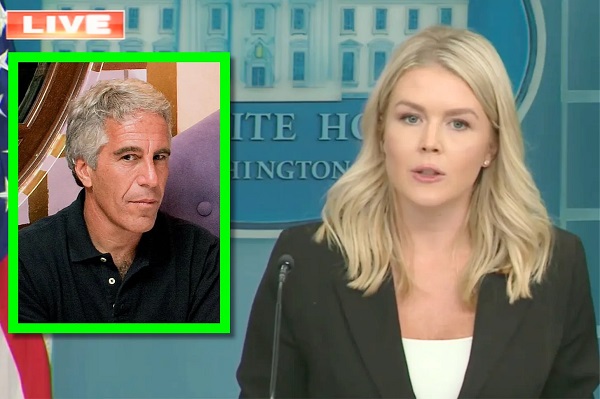COVID-19
Court Ruling: Federal Government acted illegally in responding to 2022 Freedom Convoy

News release from the Justice Centre for Constitutional Freedoms
The Justice Centre is pleased to announce that the legal and constitutional challenge against the first-ever invocation of the Emergencies Act, filed as Jost et al. v. Canada, has been decided in favour of the citizens who participated in the peaceful 2022 Freedom Convoy in Ottawa. The Justice Centre provided lawyers for these Canadians, who launched a court action within ten days of the Emergencies Act being invoked, and who sought a court declaration that the Emergencies Act was invoked without legal justification.The constitutional challenge to the invocation of the Emergencies Act was filed on behalf of four Canadians who had participated in the peaceful Freedom Convoy protest in Ottawa in January and February 2022. They are Jeremiah Jost, a 28-year-old contractor and volunteer firefighter from Alberta; Edward Cornell, a 64-year-old retired military veteran from New Brunswick; Rev. Harold Ristau from Ontario, a former Canadian Armed Forces chaplain and retired officer with Canadian Special Operations Forces Command; and Vincent Gircys, a retired, decorated member of the Ontario Provincial Police.The Emergencies Act was invoked on February 14, 2022, by the Federal Cabinet to shut down the Freedom Convoy protest. Each of the plaintiffs suffered significant harm during the militaristic police crackdown that began on February 18, 2022. Two of the applicants represented by the Justice Centre had their bank accounts frozen and seized, without judicial authorization or a review process, under laws that normally apply only to terrorists and enemy nations.Edward Cornell said his experience having his bank accounts seized was traumatic. “I broke no law, yet the government seized my accounts and froze my hard-earned money. I am not a criminal. I am not a terrorist. I am a retired Canadian military veteran who honourably served his country… I feel betrayed by my own government,” he added.The Justice Centre provided lawyers for the peaceful protest in 2022, and since that time has provided lawyers to defend Chris Barber, Tamara Lich and other Canadians facing unjust criminal charges.Justice Centre President John Carpay stated, “This is a great victory for democracy, for Charter rights and freedoms, and for the rule of law.”
COVID-19
FDA requires new warning on mRNA COVID shots due to heart damage in young men

From LifeSiteNews
Pfizer and Moderna’s mRNA COVID shots must now include warnings that they cause ‘extremely high risk’ of heart inflammation and irreversible damage in males up to age 24.
The Trump administration’s Food and Drug Administration (FDA) announced it will now require updated safety warnings on mRNA COVID-19 shots to include the “extremely high risk” of myocarditis/pericarditis and the likelihood of long-term, irreversible heart damage for teen boys and young men up to age 24.
The required safety updates apply to Comirnaty, the mRNA COVID shot manufactured by Pfizer Inc., and Spikevax, the mRNA COVID shot manufactured ModernaTX, Inc.
According to a press release, the FDA now requires each of those manufacturers to update the warning about the risks of myocarditis and pericarditis to include information about:
- the estimated unadjusted incidence of myocarditis and/or pericarditis following administration of the 2023-2024 Formula of mRNA COVID-19 shots and
- the results of a study that collected information on cardiac magnetic resonance imaging (cardiac MRI) in people who developed myocarditis after receiving an mRNA COVID-19 injection.
The FDA has also required the manufacturers to describe the new safety information in the adverse reactions section of the prescribing information and in the information for recipients and caregivers.
Additionally, the fact sheets for healthcare providers and for recipients and caregivers for Moderna COVID-19 shot and Pfizer-BioNTech COVID-19 shot, which are authorized for emergency use in individuals 6 months through 11 years of age, have also been updated to include the new safety information in alignment with the Comirnaty and Spikevax prescribing information and information for recipients and caregivers.
In a video published on social media, Dr. Vinay Prasad, director of the Center for Biologics Evaluation & Research Chief Medical and Scientific Officer, explained the alarming reasons for the warning updates.
While heart problems arose in approximately 8 out of 1 million persons ages 6 months to 64 years following reception of the cited shots, that number more than triples to 27 per million for males ages 12 to 24.
Prasad noted that multiple studies have arrived at similar findings.
COVID-19
Court compels RCMP and TD Bank to hand over records related to freezing of peaceful protestor’s bank accounts

The Justice Centre for Constitutional Freedoms announces that a judge of the Ontario Court of Justice has ordered the RCMP and TD Bank to produce records relating to the freezing of Mr. Evan Blackman’s bank accounts during the 2022 Freedom Convoy protest.
Mr. Blackman was arrested in downtown Ottawa on February 18, 2022, during the federal government’s unprecedented use of the Emergencies Act. He was charged with mischief and obstruction, but he was acquitted of these charges at trial in October 2023.
However, the Crown appealed Mr. Blackman’s acquittal in 2024, and a new trial is scheduled to begin on August 14, 2025.
Mr. Blackman is seeking the records concerning the freezing of his bank accounts to support an application under the Charter at his upcoming retrial.
His lawyers plan to argue that the freezing of his bank accounts was a serious violation of his rights, and are asking the court to stay the case accordingly.
“The freezing of Mr. Blackman’s bank accounts was an extreme overreach on the part of the police and the federal government,” says constitutional lawyer Chris Fleury.
“These records will hopefully reveal exactly how and why Mr. Blackman’s accounts were frozen,” he says.
Mr. Blackman agreed, saying, “I’m delighted that we will finally get records that may reveal why my bank accounts were frozen.”
This ruling marks a significant step in what is believed to be the first criminal case in Canada involving a proposed Charter application based on the freezing of personal bank accounts under the Emergencies Act.
-

 Alberta1 day ago
Alberta1 day agoAlberta Next: Immigration
-

 Alberta9 hours ago
Alberta9 hours agoCOWBOY UP! Pierre Poilievre Promises to Fight for Oil and Gas, a Stronger Military and the Interests of Western Canada
-

 Business2 days ago
Business2 days agoThe Digital Services Tax Q&A: “It was going to be complicated and messy”
-

 International2 days ago
International2 days agoElon Musk forms America Party after split with Trump
-

 Alberta9 hours ago
Alberta9 hours agoAlberta and Ontario sign agreements to drive oil and gas pipelines, energy corridors, and repeal investment blocking federal policies
-

 COVID-1913 hours ago
COVID-1913 hours agoFDA requires new warning on mRNA COVID shots due to heart damage in young men
-

 Alberta Sports Hall of Fame and Museum24 hours ago
Alberta Sports Hall of Fame and Museum24 hours agoAlberta Sports Hall of Fame 2025 Inductee Profiles – Para Nordic Skiing – Brian and Robin McKeever
-

 Crime10 hours ago
Crime10 hours agoEyebrows Raise as Karoline Leavitt Answers Tough Questions About Epstein


